Every succulent gardener faces the problem “how to get rid of snails on succulents’ ‘ at least once during their gardening lifetime. In this article I am trying to help you with this problem. I have few methods to get rid of snails from succulents. Let’s find more about them.
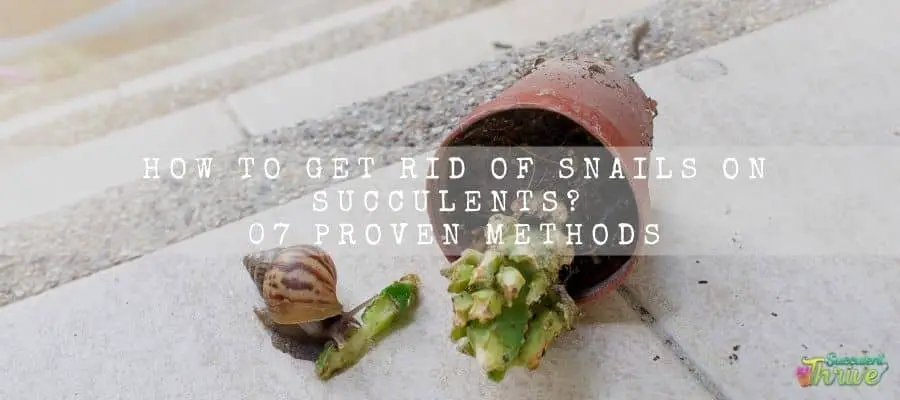
Are snails bad for succulents?
Snails are bad for succulents as they damage the succulents. Slugs usually annoy the succulents despite how harmless they look.
These would be such a menace for freshers as well as for the experienced gardeners in gardening.
Besides, they are fond of consuming the tender new growths of the plants and you could identify that quite prominently.
In addition to succulent leaves, snails eat the succulent stems, fruits and the flowers as well. Snails could eat chunks of your beloved succulents and it would be heartbreaking to spot them losing precious plant parts. Snails further prefer to eat dead and dying succulents as well.
Snails first start laying the eggs and they develop and hatch. Usually, they can live from one year to five years.
They prefer to occupy the cool moist conditions and you could spot them actively occupied in the night.
Snail eggs laying takes place a few times in a year. Usually if we consider a cubic meter of soil, you could spot about 200 slugs and snails lodged there.
However, you can spot the snail invasions as they leave significant damages on the plants.
If you could spot your succulents are damaged before early spring when the other insects are inactive, it could be most probably due to snail infestation.
If you could spot silvery slime trails on the ground or around the pots, you could ascertain that snails have invaded your beloved succulents. Snails usually make scalloped edges on the plant’s leaves and that is where they mainly feed on.
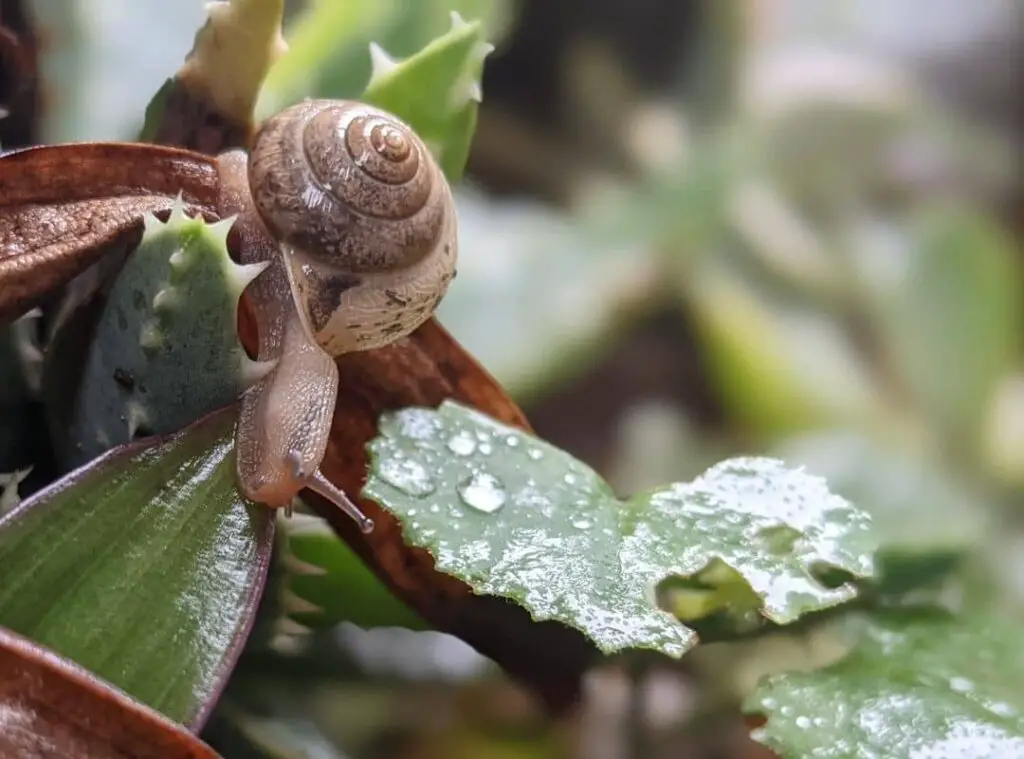
How to get rid of snails on succulents?
These are the kind of pest type, which you cannot get rid of completely as they are such annoying pest types. However, there are few methods you could practice overcoming them.
01. Hand picking
You can simply pick them manually if you are ready to do it as you need to do it with so much patience though.
All you need to do is to remove them manually and get rid of them. I suggest you wear gloves when you do it unless you find it very unpleasant.
Keep doing this for one week.When you catch the snails, you can dispatch them in a bucket which you have filled with soapy water.
Alternatively, you can spray a diluted ammonia solution as well. To make it, you need to mix Ammonia with water at a ratio of 1:10. Next simply add them in a spray bottle and apply them.
02. Egg Shells
If you are looking for an environmentally friendly manner of getting rid of the snails, you can use eggshells.
You can have productive results from using the egg shells. .Simply you have to crush the eggshells into small pieces and apply them around the pot.
Moreover, you can apply it right into the plants as well. They will then act as deterrents.
However, they will help to navigate across and further it will be effectively deterring them. This method does not have any poison included and you may use them for your succulents even when you have pets and small children.
These are completely biodegradable also. In addition to that, it is effective in improving the soil quality as well.
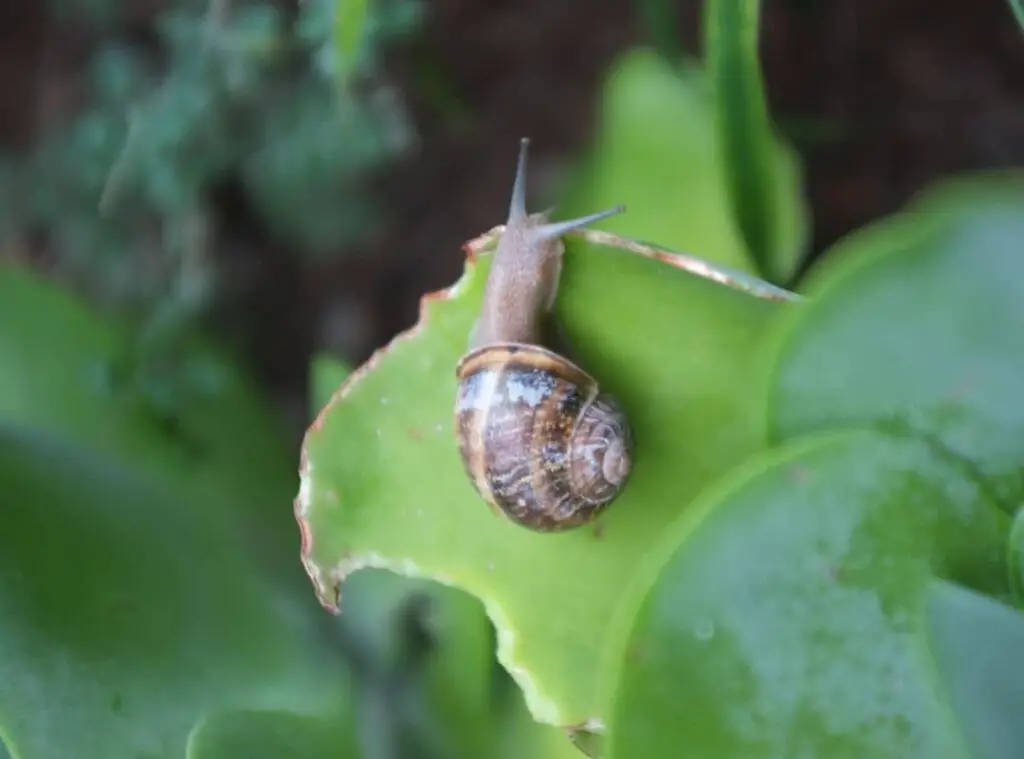
03. Poison Bait
If you are not satisfied with using deterrents, you have some more options which you can consider using.
First would be using the bait and you can find them in different forms such as pellets, meal and in liquid slurry. However, snails need to consume them so that you will have successful results.
However, you can scatter the pellets and meal baits around the plants. Alternatively, you can place them in piles on the damaged areas also.
Ensure that you act cautiously if you have kids or pets around the area as it could be poisonous for both pets and for kids.
Using the liquid slurry is a famous way of getting rid of the snails. You simply can apply it directly on to the sites of the plant and it could last for a longer period too.
You can squeeze them as a thick liquid onto the ground. To get best results, you need to apply them in the night as snails will also be more active in the nighttime.
Moreover, you can spiritize your garden whilst adding some water so that you could make the soil moist.
That will make the snails more attractive towards the plants. Next you can apply the bait around dusk. Make sure that you do it with care as it could be poisonous.
Despite the fact that how popular these are, they could be excessively contagious for pets if they consume them. Hence handle it with care and with caution.
04. Beer Traps
In addition to aforesaid steps, you can also consider creating a beer trap. Making it is a simple process. All you need to do is take a small bowl cup and bury the damaged area in the rim.
Next, fill it with 50 % of the cup with fresh beer. Snails are quite attractive for the fragrance of yeast it contains. When they try to approach it, they will end up perishing.
You can easily remove them from the cup once they are drown. You can keep refilling the trap so that you could keep the snails away from your plants.
The only concern you have is that you will end up wasting your god beer.
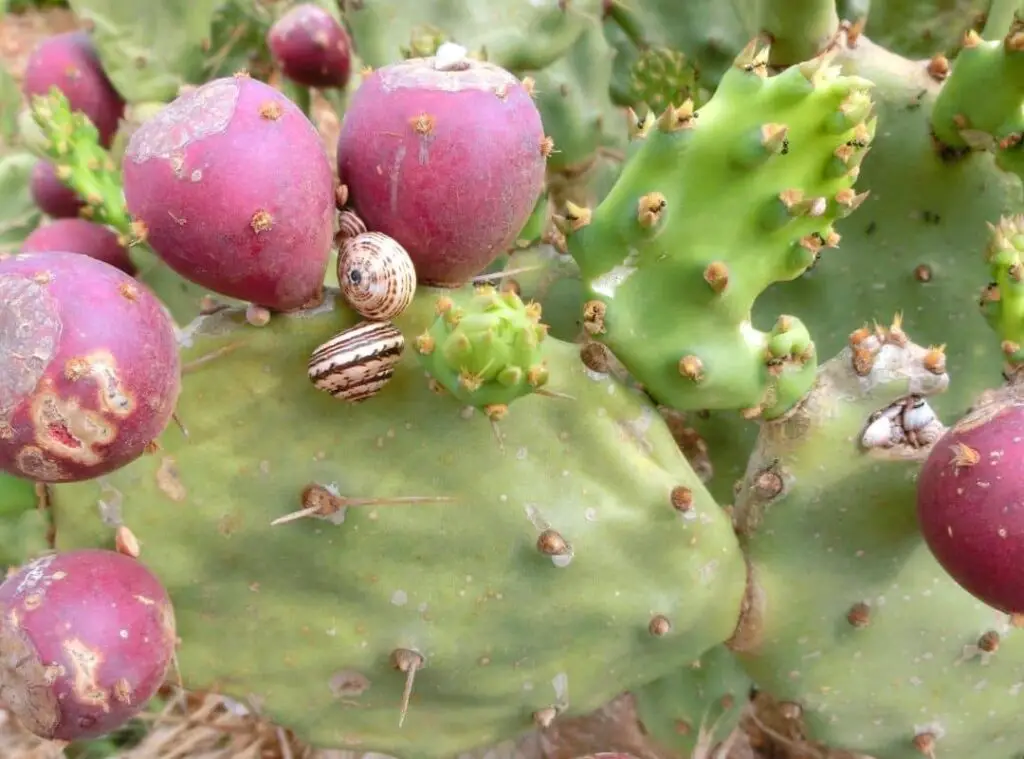
05. Copper Screens
If you are tired of trying the aforesaid methods, you can try using the copper screens. It is worth trying!
When the snails reach the copper, they respond to it by producing the slime and it will create an electric shock, sort of a reaction to their nervous system.
It does not create any harm for the snails and it is something good about using this method. To do this, you can erect a copper screen and bury it several inches into the soil surface.
It will avoid the snails digging their way to reach the succulents. Consequently, it will help the snails to stay away from the succulents.
This is an effective method which could be productive in overcoming the snail menace. Besides, it is something which anybody can afford too.
Having said that if you want to apply it for a whole garden the cost would be on the higher side. Above all, this is an environmentally friendly method which you can apply as they are safe for pets and for kids at your house.
06. Salt
You can use the natural salts from oxidizing copper as they act as a repellent for snails. You can consider using uncoated copper flashing, banding and mesh as they would suit this purpose.
You simply have to lay them around the area where you need to give protection. Besides, snails prefer to stay underneath the planter rims, hence you can smear the area with a mix of Vaseline and salt.
It will also act as a repellent. Moreover, you can sprinkle salt at the snails, and it would kill them.
07. Other
Apart from all methods mentioned above, I do not recommend applying salt on the snails as it will not be great on the soil.
Consequently it could eventually end up hurting the plants too.. As aforesaid you have so many options to go ahead to overcome the snails.
Moreover, you could invite the natural predators also to your garden. You can consider adding predators such as frogs, toads etc.
You need to try to make the frogs stay in the garden by providing shelter for them during the day. Especially if you have a water feature there, you could do this.
Frogs are renowned as a famous snail predator as they can eat a significant number of frogs. Additionally, it will prey on other insects also.
Trust you found one of these methods interesting and useful and now that you know already how to overcome the snail menace from your beloved succulents.
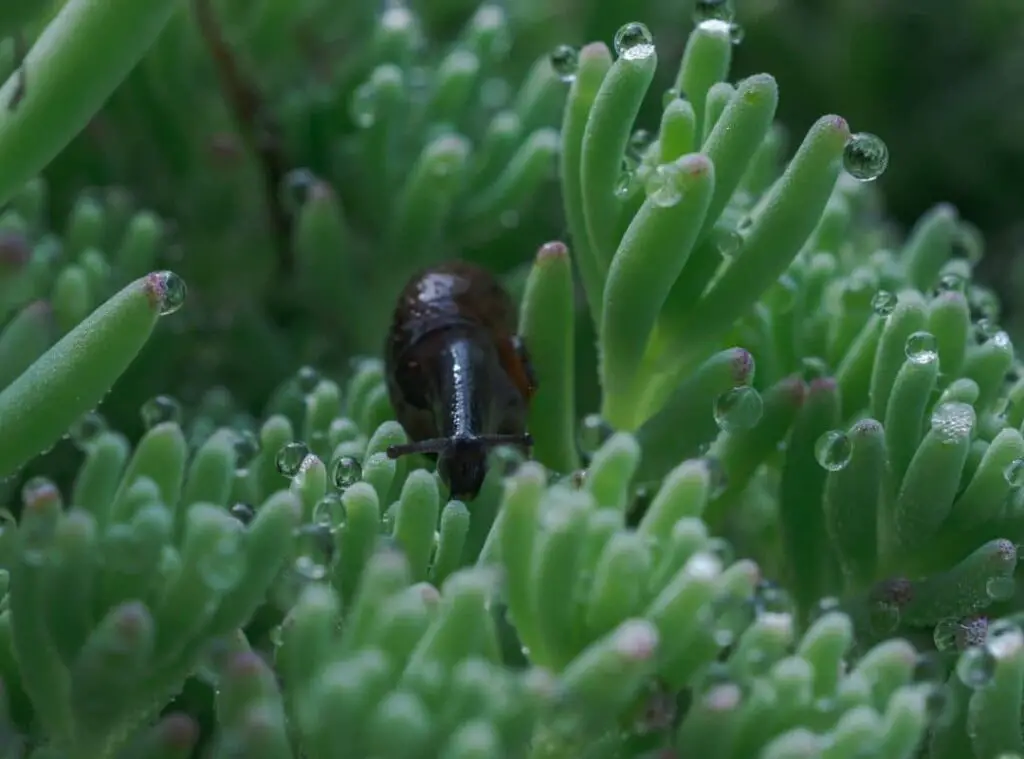
How do you kill snails without harming plants?
You can simply pick them manually. Further you may consider watering the garden. Add copper screens as mentioned above.
Sprinkle broken eggshells in the garden. spray some homemade snail repellents. Plant sacrificial plants. Moreover, you may use beet traps etc.
How do I get rid of slugs in my succulents?
Make the natural predators thrive in the garden. Set up a beer trap as mentioned in the article. Use coffee grounds to work. Sprinkle some sand around the plants.
How do I get rid of little snails in potted plants?
You need to first fill a wide mouthed jar. Additionally, you can fill a bowl halfway with beer. Place the infested area in it and it will collect the snails entirely.
It would be even better if you could bury the container in the ground and then do this process. Then once the snails come out, they will reach here and will end up drowning here.
Do snails cause damage to succulents?
They cause damage to the succulents.
In fact, they tend to eat the succulent leaves and flowers and will make sure that they leave significant damages on the infested plant parts. For example, they will leave holes in the plant leaves.
Can plants recover from snail damage?
Succulents can recover from snail damage as they cause only temporary damage. However, ensure that you attend to them the fastest you can.
Usually what happens is, the damaged plant parts will deteriorate, and new growth will take place.
Read Next : Succulent In The Rain Gutter or Unfamiliar Gutter Gardening
